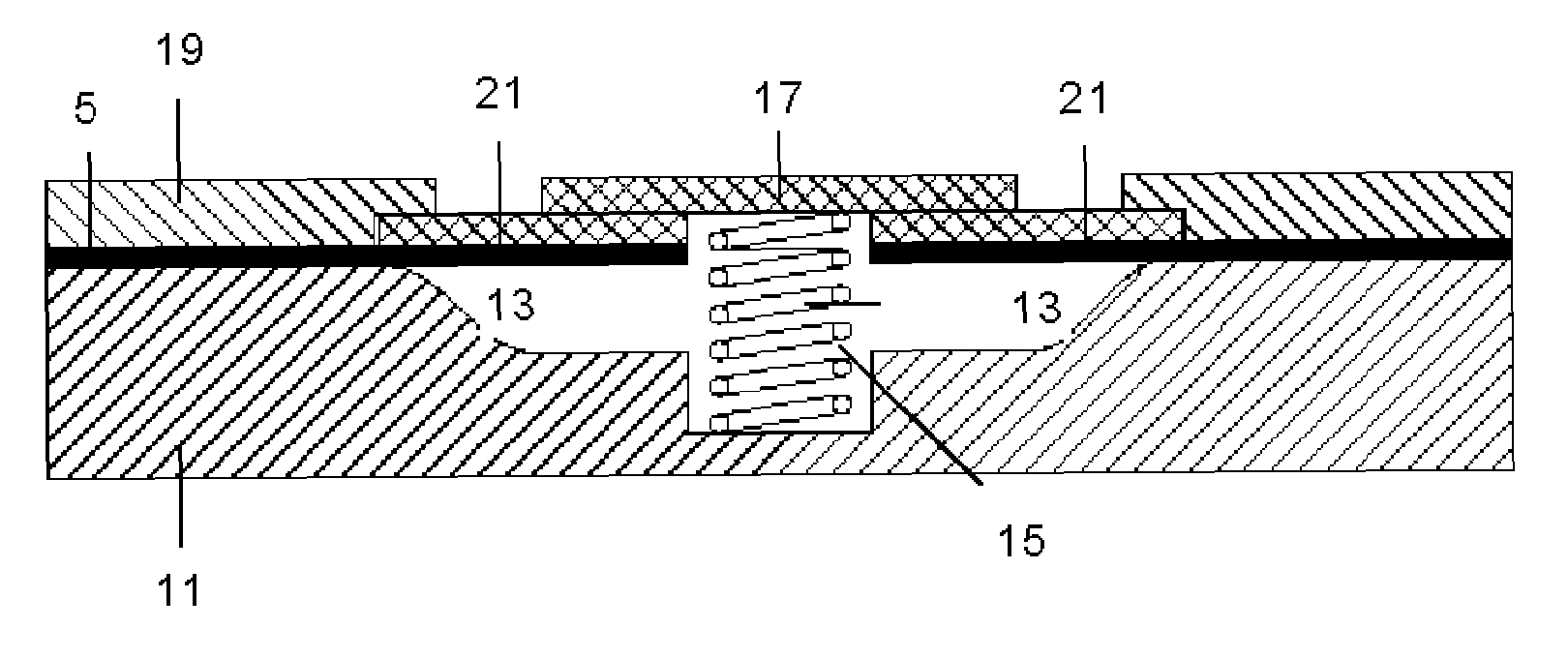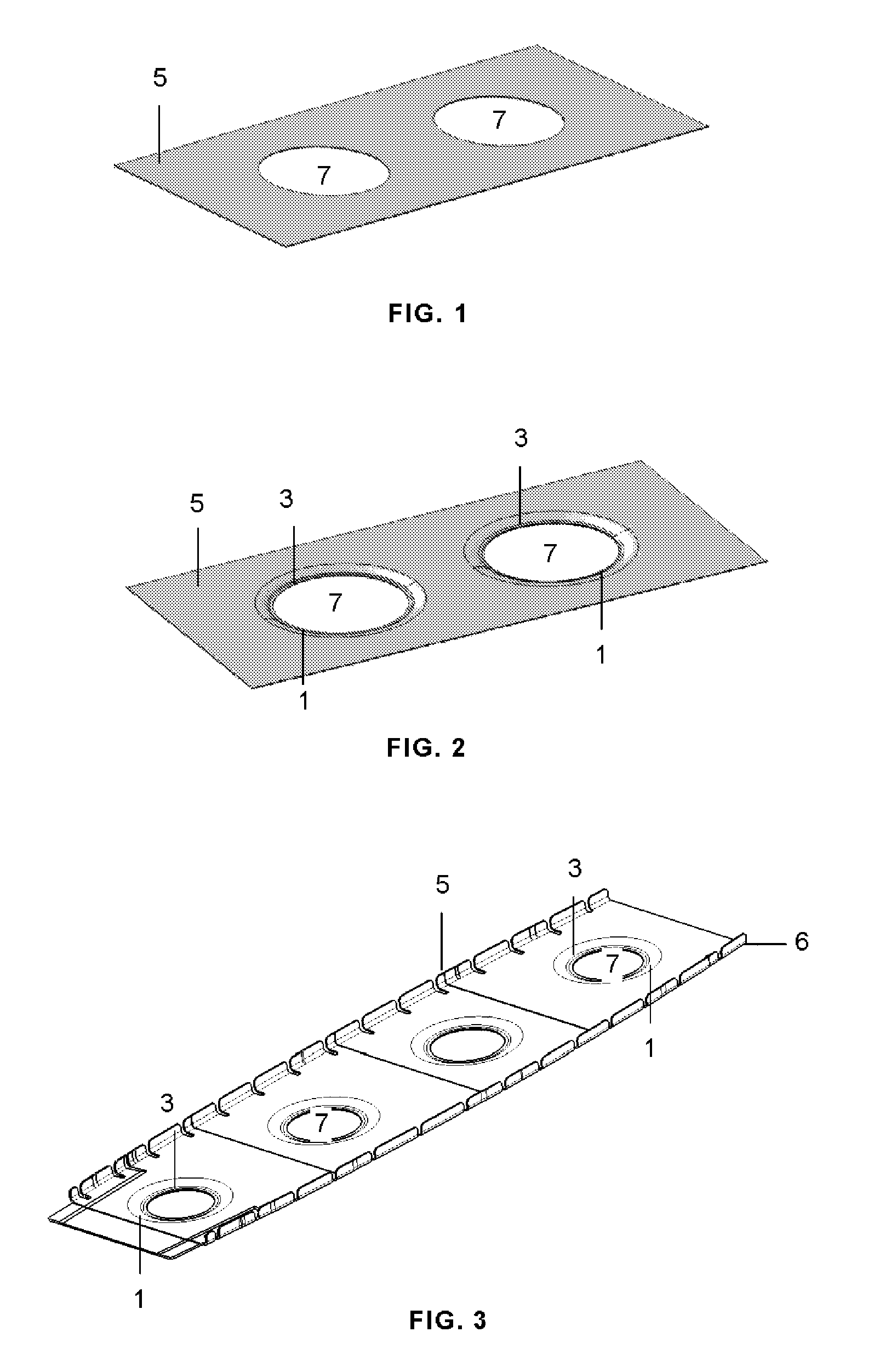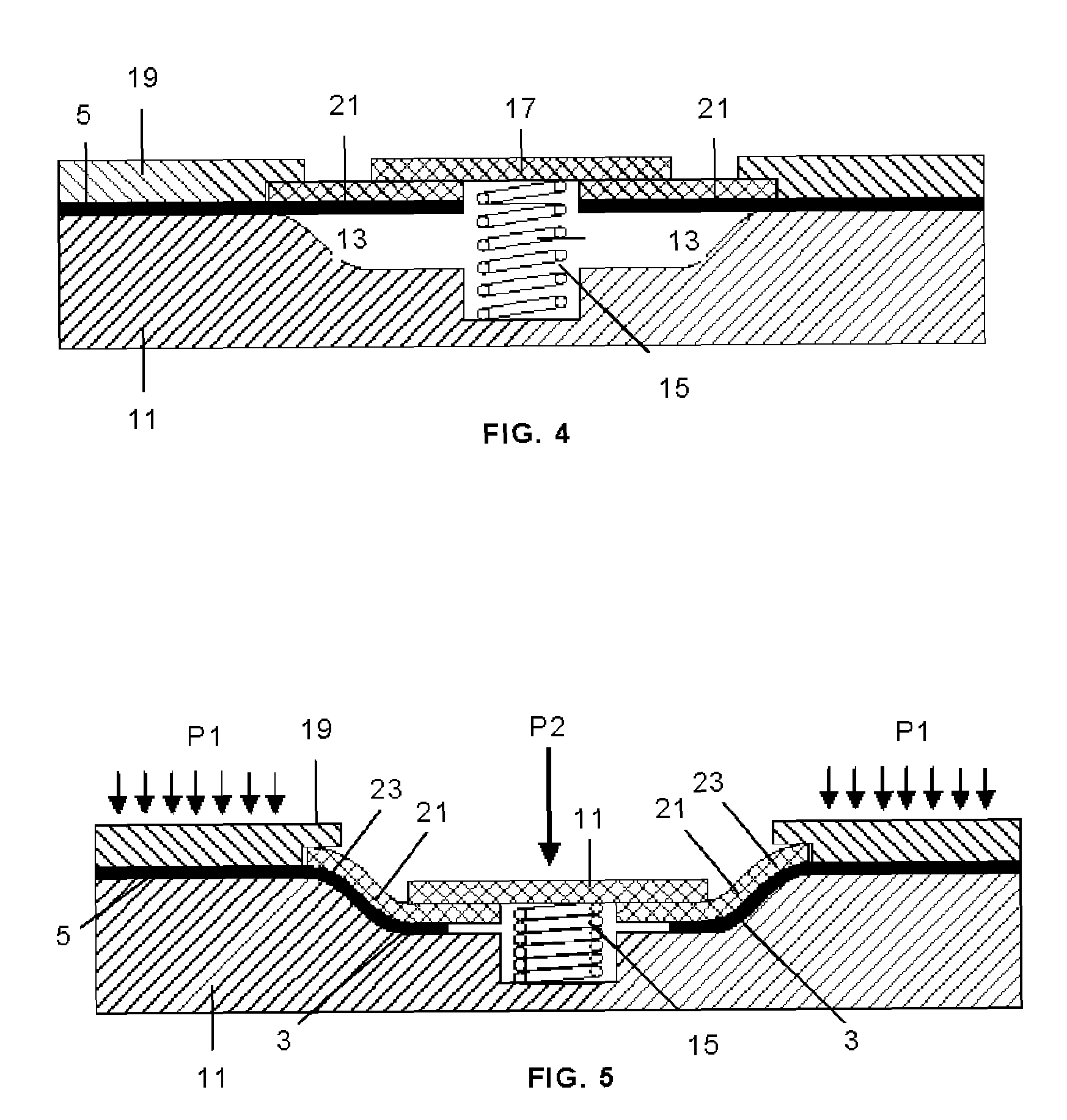Process for making swaged lighting holes in planar areas of preimpregnated composite parts
a composite part and lighting hole technology, applied in the field of making swaged lighting holes in the planar area of preimpregnated composite parts, can solve the problems of fabric, poor structural properties, and high cost of process, and achieve the effect of facilitating the slippage of fibers
- Summary
- Abstract
- Description
- Claims
- Application Information
AI Technical Summary
Benefits of technology
Problems solved by technology
Method used
Image
Examples
Embodiment Construction
[0018]An embodiment of the process according to the invention for carrying out the swaged lighting hole 1 consisting, as is shown in the cases represented in FIGS. 2 and 3, of a recess of an area 3 of the part 5 surrounding the opening 7, with an S-shaped contour, is described below. As the person skilled in the art will understand, the swaged lighting hole may have another shape.
[0019]The swaged lighting holes 3 are made in a planar or quasi-planar area of the part 5, but the latter may have a non-planar shape like the part 5 shown in FIG. 3, which corresponds to a rib with a C-shaped section, in which the flanges 6 have been formed prior to making the swaging according to this invention.
[0020]The part 5 is covered with a thin plastic film (not represented) to prevent it from adhering to the tooling of the swaged lighting hole process and is placed, suitably centering it, on a female tooling 11 the top side of which reproduces the shape that the part must be given during the swagin...
PUM
| Property | Measurement | Unit |
|---|---|---|
| pressure | aaaaa | aaaaa |
| resistance | aaaaa | aaaaa |
| shape | aaaaa | aaaaa |
Abstract
Description
Claims
Application Information
 Login to View More
Login to View More - R&D
- Intellectual Property
- Life Sciences
- Materials
- Tech Scout
- Unparalleled Data Quality
- Higher Quality Content
- 60% Fewer Hallucinations
Browse by: Latest US Patents, China's latest patents, Technical Efficacy Thesaurus, Application Domain, Technology Topic, Popular Technical Reports.
© 2025 PatSnap. All rights reserved.Legal|Privacy policy|Modern Slavery Act Transparency Statement|Sitemap|About US| Contact US: help@patsnap.com



